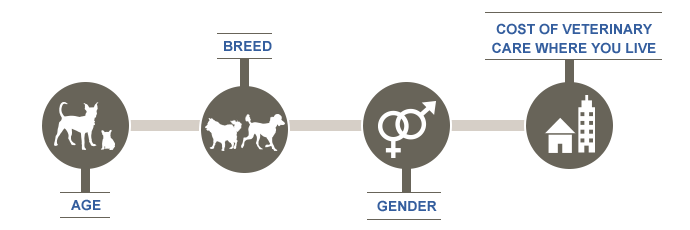Trupanion’s pricing approach is different
The main factors we use to price your pet’s cost:
- Local cost of veterinary care
- Age of the pet when they are enrolled with Trupanion
- Breed
- Gender
- Selected excess (optional range from $0 to $1000)

Trupanion’s pricing approach is to share risks equally and fairly among the “lucky,” “unlucky,” or “average” pets. We do this by having a deep understanding of the average cost of care. With over 1 million pets currently covered globally, over $2.7 billion USD paid in claims in North America alone (yeah, we said billion), and 20 years of experience, we have the ability to price your pet’s cover with unprecedented precision. This means we don’t arbitrarily increase prices because a pet is a year older or because they are unlucky and have to submit a claim.
How often will your price change?
We are continually adjusting our pricing, up or down, as appropriate to approximate a consistent cost-plus target for new members. Anytime we change your price, it’ll be “locked in” for at least 12 months.
We don’t increase prices because your pet is older at renewal – unique in Australia
Birthdays should be celebrated! After you sign up, your price won’t increase because your pet gets a year older. If your pet signs up when they’re 2 years old, they’ll always be priced as a 2 year old. That’s why we encourage pet owners to sign up their pets as puppies and kittens.
We don’t punish unlucky pets – also unique in Australia
The reason you have insurance in the first place is to give you a safety net for when your furry friend gets sick or hurt. So we never penalise members for submitting claims by increasing their cost (honestly, we think that kind of defeats the whole purpose of having insurance). And with no payout limits, your pet won’t “run out” of cover.
Does this mean that Trupanion doesn’t increase prices?
The average annual increase in veterinary care for the past 15 years has been +5% to +10%. Members can expect an annual increase to reflect the average annual increase in veterinary care costs and utilisation. In 2022 and 2023 we have seen an increase in the average cost of veterinary prices well above this long term trend. Unfortunately even throughout 2024 veterinary inflation is still outpacing the overall economic inflation seen in the Australian economy.
